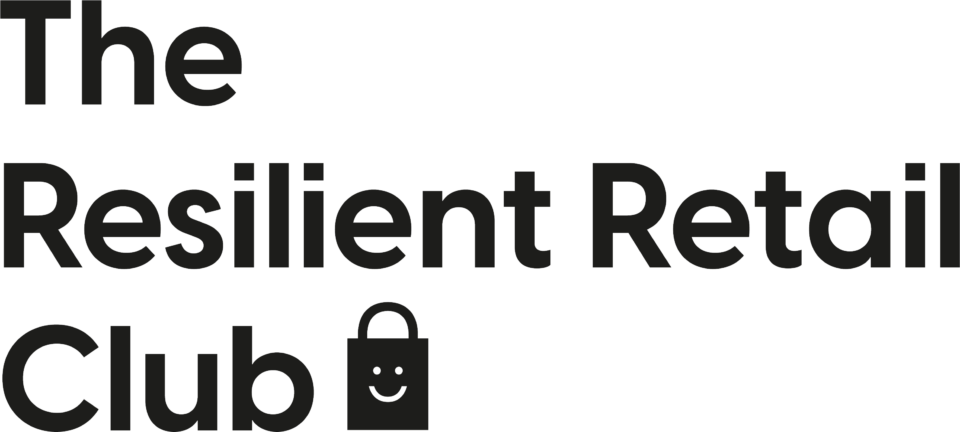Where to Sell Your Creative Products
From eBay to Etsy and Stripe to Paypal, there are a hundred different options when it comes to selling your creative products online and getting paid, and it seems a new sales platform or marketplace pops up every week – so where do you start and how do you know which platform is right for you and your business?
In episode 28 of The Resilient Retail Game Plan, I cover the benefits and pitfalls of some of the most popular third party selling services, the importance of having your own web presence and how to get your priorities in order when it comes to getting your products in front of people.
We’ll look at the power of leveraging social media to help kicks things off for those just starting out and how to make sure that you’re putting your time and money to the best possible use when It comes to generating traffic and sales – and I’ll give you my recommendations for what I believe are the most robust e-commerce platforms that will give you the analytics and scalability that you need to help grow your business.
No time to listen? Read the episode in this blog post below!
Be nimble
First up – if you’re just starting out, haven’t got a website ready and want to get going – do it! You can sell through Instagram, Facebook and other social platforms – it’s really that easy. As long as you’ve got a PayPal link or a way of taking payment, then why not get going. You want to be as nimble as possible when starting out – especially right now. So don’t sink loads of money into a website upfront. Prove the concept of your business first and it’s so easy to do that by selling through social.
The next step might not be your own website yet – it may be going straight to a third-party platform like Etsy – they allow you to dip your toe in the water, get yourself out there, get your product up in front of an audience, and basically just make a start. It’s worth mentioning that Episode 14 of the Resilient Game Plan podcast is all about selling on other market places and I go into more detail so it’s worth having a listen to that too.
A place of your own
Then you can start thinking about your own website. You want to create your own online space for people to come to. When people see your name, whether it’s mentioned by other businesses, in PR or on social – often the first thing they do is look you up and – if it’s there – they will click on your website link. In the very early stages as I said you can send them to Etsy, for example, but once the orders start coming in you’ll want your own space – somewhere you can tell people who you are, what your business is, what you stand for – to tell your story and get your products out there.
Different selling channels create a spectrum if you like. With your own website you have got complete control over every aspect, you control what every page looks like, what the user journey is – you control the experience anyone has when they come to your website. With that of course it means you have to generate all your own traffic to your website. With third-party websites there is huge amounts of traffic because the website and other businesses are driving traffic there, of course that means you don’t have control of the user experience.
You’re not in the business of selling products, you’re in the business of gaining customers! And the best way to do that is to connect with customers after they have bought something from you. Selling on a third party website means that website owns the relationship but selling on your own website then you do!
I say Shopify
A very frequesnt question that I’m asked is – who should I use? And my answer is always Shopify. Just to clarify because people often mistake Shopify for a marketplace but it’s actually a website platform like WordPress or Squarespace. Shopify are a Canadian company and what makes them unique is that they are designed for e-commerce, most of the other website platforms out there have e-commerce elements that you can add in – but Shopify was built for e-commerce.
The tech stack! All of the different pieces of technology that you use in your business – you could build on Shopify, you could build the same tech stack that John Lewis has but you could do it in 45 minutes at a fraction of the cost. And frankly, it will probably work better than John Lewis’s tech stack because it’s all been designed around one platform – Shopify – and it will work together.
That means that you can have your website, your loyalty scheme and almost endless number of add ons – lots of free ones just watch for the ones you have to pay for. The other thing is, is that their analytics even on the basic package, gets you some key statistics, which is really good and useful, and in general better than a lot of other website platforms, they are stats for e commerce. I’m not sponsored by Shopify – I promise! I just being honest about who I recommend.
Get the picture just right
When you are starting out I encourage being nimble and not spending huge amounts on a website BUT I would recommend that you invest in some decent product photography, it will help you in so many different elements of your business.
It will help you get your website looking really great. It will help your social media look strong, it will help you with your wholesale, for example, so many ways and options and things that you can do that will just make your business stand out if you have really great imagery.
Channel your energy and time
Don’t forget that your limitations as a small business owner are your time and your money. So choose wisely on where to sell once you have a good website up and running. Always – the most important question is – where is your customer? If somebody approaches you with a new marketplace that they’ve launched, ask yourself – is my customer there? Do the other brands on this marketplace reflect my brand?
Or if you approached about taking part in an event or you see an event being advertised? Ask yourself – is this going to appeal to my customer? Do I feel confident that my customer is going to be coming to this event? These are really important questions to ask yourself before you commit any of your time and energy to events or other selling channels.
You also need to be sure you’ve put enough time and energy into your main selling channel – your website or your social presence. Ask yourself – how much capacity have I got in the business? Is it going to take away from the main running the business? And is it the right thing to do? Or should I just keep focusing on all of the different things that I need to do to drive the traffic to my own website? Channel your energy and time to where it’s most needed and where it will yield the best results.
If you enjoyed this post, why not join up to my email list? Not only will you get exclusive emails and offers to help you and your business, you will also get access to ALL THREE of my FREE business toolkits.
These toolkits are packed with useful tools and information – from checklists, to e-books, workshop replays and more, there’s one for every stage of your business journey.
Ready to get access to all three – Start Your Business, Grow Your Business, Scale Your Business?
All you need to do is put your email in below, and you’ll be sent the link to access them.
For more information about all three of my toolkits, click here.







